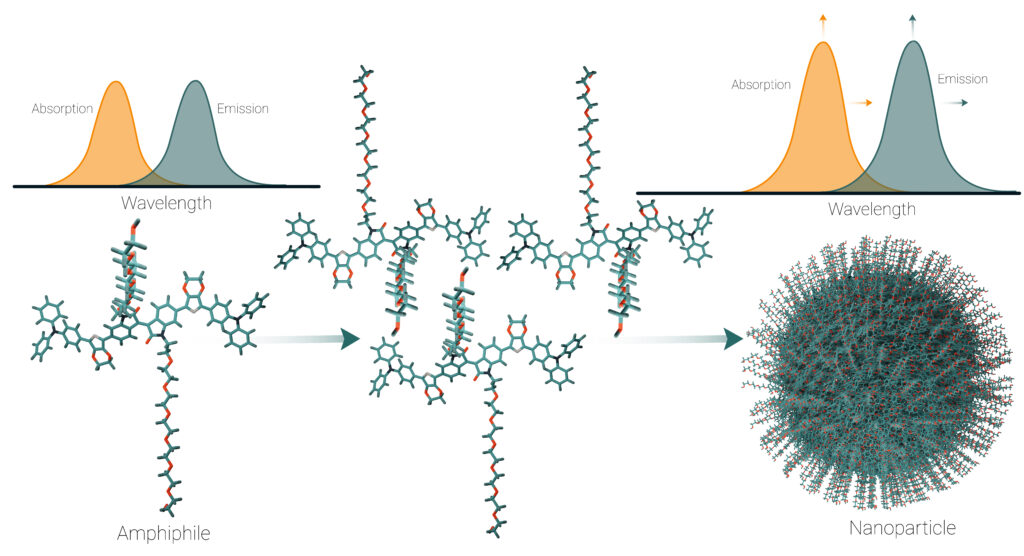
The impact of polymer nanomaterials on the field of bioimaging is revolutionary as researchers are taking more supramolecular or bottom-up approaches to overcome challenges in achieving safe and efficient materials. With a specific interest in fluorescence imaging, developing biocompatible polymer nanomaterials with optical properties wit long wavelengths is a high priority. As interest in amphiphilic and self-assembling polymers increases, the need to understand how the physicochemical properties of those polymers contribute to fluorescent properties begins to intensify as an essential component towards the advancement of the field.
Employing versatile amphiphilic polymer constructs, we study how the physicochemical properties and self-assembling behavior of polymeric materials contribute to uniform nanostructures with desirable photophysical properties and emission.
We use our skills as supramolecular chemists to create these unique self-assembling polymers and utilize their nanostructures as templating scaffolds to (a) assess intermolecular interaction between organic frameworks, (b) elucidate aggregation pathways between polymers and small molecules and; (c) correlate the resulting aggregation behaviors with their corresponding optical properties to develop materials that will advance the fields of bioimaging and nanomedicine.
Key words: polymer dye conjugates, aggregation induced emission, fluorescence spectroscopy
Representative work publication: Effects of Nanoaggregation on Isoindigo-based Fluorophores for Near-infrared Bioimaging Applications




